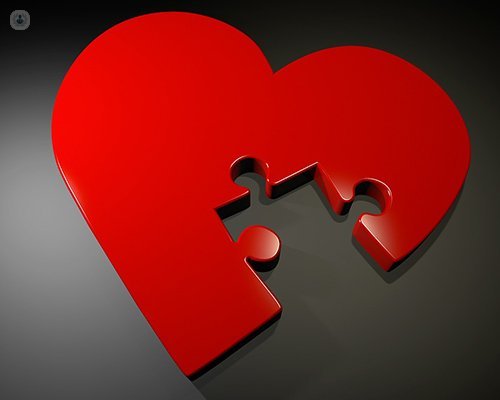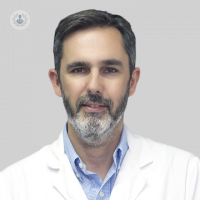Atrial fibrillation: symptoms, causes, treatment and prevention
Written by:
What is atrial fibrillation? What types are there?
Atrial fibrillation is the most common sustained arrhythmia in our day (with an estimated adult population of between 0.4 and 2% prevalence). Its high frequency is associated with an aging population, and in elderly patients determines a significant increase in mortality due to cardiovascular problems.
It is an alteration of normal conductivity of the heart, called sinus rhythm when the atria do not contract correctly and ventricles made irregular and too fast, preventing heart function. It is usually associated with mitral valve disease, but may also occur in isolation or linked to other diseases. It is distinguished by the lack of coordination in the rate of contraction of the atria. You can generate thrombi and emboli, and major cardiovascular complications such as stroke.
It can manifest itself paroxysmal (brief episodes are self-limiting), persistent (longer episodes that usually require medical intervention for removal) and permanent or chronic.
What are the causes?
The production mechanism is based arrhythmia in the left atrium is activated in an uncoordinated manner without effective contraction. This usually translates into faster than usual pulsations, and the possibility of thrombus formation (blood clots) within it.
Atrial fibrillation may occur in hearts that have certain heart diseases such as mitral valve disease, coronary heart disease, pericarditis, congenital heart disease, among others; associated with other diseases such as hypertension, thyroid disorders, etc.. or even when there is excessive alcohol consumption. But it can also occur in apparently healthy people who, in principle, do not present any cardiac pathology, and in these cases is usually of unknown cause, while usually less serious health consequences when it occurs in diseased hearts.
What are the symptoms? How can we detect that is happening to us?
Patients usually present with palpitations that is subjectively feeling abnormal heartbeat, which can be perceived as a pounding, developed heartbeat, irregular heartbeat or rapid heartbeat; shortness of breath, chest pain, fatigue, dizziness, fainting, etc. In general, atrial fibrillation incapacitates to perform simple tasks of everyday life.
Throughout the development of the disease, the patient can see periods without symptoms because, over time, may even disappear palpitations. This is critical because it is possible to be in danger without feeling any discomfort.
Sometimes it is discovered that a patient has atrial fibrillation because suddenly suffers ischemia or cerebral stroke (transient or permanent), whose clinical manifestations (difficulty in mobilizing half of the body or speaking or both) could disappear within 24 hours or become permanent (or even cause death). Strokes are caused by clot formation in the atria, which can break off and migrate through the bloodstream to the brain, occluding an artery, with the consequent lack of supply to part of the brain, which is what we call stroke .
It is easily detected by performing an electrocardiogram (ECG). Then rule out the presence of structural heart disease by echocardiogram.
The best technique to detect thrombi in the left atrium is the transesophageal echocardiogram (TEE), which also provides information about the right time to perform electrical cardioversion.
Can it be prevented in any way?
Recommendations to patients with atrial fibrillation include all of the following:
- Controlling blood pressure. Blood pressure is the leading cause of atrial fibrillation. For this reason, it is especially essential to maintain strict control of it.
- Moderate alcohol. Alcohol is a trigger episodes of atrial fibrillation. There are even people who only present after a large alcohol intake. Moderate consumption of alcoholic beverages is always advised, but also taking other heart disease, you should consult a specialist in Cardiology on consumption. Alcohol may be contraindicated absolutely.
- Reduce stimulants. Coffee, tea, cola drinks ... are stimulants capable of generating atrial fibrillation, so you must drop or reduce consumption.
- Leave the snuff. The snuff is always harmful to health and in people with atrial fibrillation even more because it contains stimulants such as nicotine, which can lead some crisis. Quitting smoking is ideal to reduce episodes of atrial fibrillation, as well as the possibility of cardiovascular disease (myocardial infarction, stroke ...) or non-cardiovascular, as different types of cancer. To overcome addiction more easily, you should consult with your doctor. In many health centers there are specialized units that are helpful smoking.
- Moderate exercise. The practice of intense and prolonged exercise, can prevent the full effectiveness of the treatment of atrial fibrillation, as well as increase the risk of recurrence. This does not mean that the patient should adopt a sedentary lifestyle. Walk every day and getting around is important, but avoiding distance running, biking or big sports that involve a great cardiovascular effort.
What is the most effective treatment?
There are two main aspects: first, the arrhythmia control, whether their reversion to normal sinus rhythm of the heart by cardioversion or control of pulsations with drugs, and second, the prevention of strokes by anticoagulant medication (such as Sintrom , the oldest and known, or other newer anti-clotting drugs, with proven effectiveness and safety already).
Cardioversion involves applying brief electrical current on the chest with a defibrillator, after sedation of the patient. This technique is very safe and usually reverse the arrhythmia in 80-90% of cases, but does not prevent you come back, you can do this only drugs or ablation.
There is a potentially curative treatment, called pulmonary vein ablation, which allows producers injure foci of arrhythmias with a current low voltage power radio frequency to eliminate the arrhythmia. Because of its technical difficulty, risks and therapeutic success, around 70%, this method is usually reserved for patients with relapses despite treatment with drugs.
When the risk of stroke is considered high, the specialist recommends the patient treated with anticoagulant drugs. When the risk is low, it can be easily treated with only aspirin (acetylsalicylic acid) or even not require medication. These issues can only assess your doctor.
Edited by Roser Berner Ubasos


